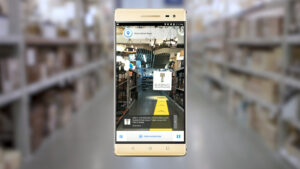Ever wish you had a crystal ball to predict customer complaints and issues? While we don’t have a magic solution, we do have the power to predict more, prevent pain, and proactively create positive moments along the customer’s journey.
There are ways to be proactive in customer experience that apply to almost every journey. There are a lot more than five ways, but these can inspire you to look at your customer’s journey and take action.
Why Proactive Customer Experiences Win
Most organizations set up customer journeys in a way that is reactive. Leaders often brag about how great their service organization is. They appreciate how the contact center agents resolve customer issues.
Yet many organizations don’t then ask the question: how can we prevent this issue in the future?
Customers appreciate proactive communications and problem-solving. Have you ever made the drive to pick up your dry cleaning, a prescription, or something else that was promised only to find they don’t have your order ready when you arrive? That’s frustrating. It’s even more frustrating when they tell you it’s because of an identified problem they didn’t bother to tell you about. “We don’t have that medication right now and it won’t arrive until Tuesday.”
But what if they called you in advance to tell you your options? This very thing happened with our local pharmacy and they offered choices. They let me know when it would arrive, or they offered to call the bigger chain pharmacies and transfer the prescription if they could get it sooner. This proactive, customer-focused approach made me a loyal customer.
Sometimes proactive problem-solving is simply communicating directly with the customer. Sometimes it’s about avoiding the problem altogether. And sometimes it’s paying attention to pain points and addressing them the best way you can, even if you can’t change the actual journey.
Let’s take a look at an example of each type of proactive problem-solving.
1. Create Workarounds for Broken Processes
I can’t tell you how often I hear about things that simply don’t work well for customers. Everyone understands and appreciates the pain point. The customer feedback consistently tells us how customers are confused, irritated, annoyed, and frustrated.
But inside the organization, they don’t see a way to solve these issues because the process, tools, technology, supply chain, employees…you name it!….are not going to change. The problem created by technologies like invoicing processing systems or the way products are shipped can’t change overnight. These types of improvements require time, engineering, implementing new tools, or more.
Instead of throwing up our hands and saying that’s the way it is, let’s aim to do what we can.
For example, there are limits to certain scenarios that can’t simply be magically altered. Restaurant drive-through lanes are often land-locked and can only go as fast as each order.
Portillo’s, a beloved restaurant chain in the Chicago area, determined ways to speed up the drive-through lane by sending workers out to the cars to send the orders in faster. Payment was handled in line, orders were sent to the kitchen, and drivers were able to drive through to get their orders and go.
Nothing actually changed in the traditional layout of the drive-through lane. They just proactively solved the problem with creative thinking and additional workers. (See how it works )
It’s not uncommon for Portillo’s to LOOK like they have a line that will take forever. But they are so well-known for this speedy service that a long line doesn’t intimidate customers who NEED that chocolate cake shake!
Portillo’s drive thru ppl are all the real MVPs
— amir (@streetsbeatschi) March 31, 2023
Related: How a Service Code Empowers Employees to Deliver Exceptional Experiences
2. Say Sorry First and Mean It
Things happen. Customers have bad experiences. And when that does happen, they want to hear directly from the brand.
Recovering well and proactively addressing the pain points could actually lead to more loyalty.
Southwest Airlines, while still recovering from their holiday-time meltdown, is known for proactively addressing customer concerns.
I flew with them several years ago and the wifi was just bad. Several customers asked and they did their best to reset the system. I left that flight feeling like I just lost the fee and didn’t think much of it.
But they refunded the wifi fee and provided a coupon for next time. I received the email without complaining.
It’s not the only time they’ve done this. After a flight with a series of delays , customers received a specific message and retribution, all without asking.

Related: 3 Ways to Lean Into Empathy for Better CX
3. Pay Attention to Feedback – and Address the Issue!
One of the complaints shoppers have in the big box stores is simply navigating through them. Home improvement store journeys can be especially daunting.
Try finding that one type of drill bit and determine what refrigerator will look best in your new space in one trip! Each store is a little different, and like most retailers many stores are short-staffed.
Lowe’s and Home Depot invested in mobile apps that customers can use in-store. These apps allow customers to see store maps, scan bar codes for information and pricing, and use augmented reality to “see” how that refrigerator will look in their kitchen.

Investing in these apps means customers can achieve their goals faster and with less friction. And the in-store navigation tools address a specific pain point proactively.
Related: 7 Moments, 7 Customer Feedback Questions for Better CX
4. Reassure the Customer Wherever Necessary
Have you ever clicked on a “buy now” or “submit” button on a site to have nothing change? It’s unnerving when we don’t know if what we think worked actually worked!
There are so many points of reassurance needed to build trust and confidence proactively with customers. And there are so many ways customer behavior tells us when they need this type of reassurance!
Look for:
- Digital behaviors – like clicking those buttons again and again! – and address that proactively with a message
- Customers who call day after day to check on their order status, their account balance, their delivery date, etc. They don’t have a way to proactively seek this information if they are looking for reassurance this way.
- If there are parts of the journey that take just a little too long. If there is a ten-day turnaround between order and delivery, check in with the customer several times so they know they’re not forgotten.
This is an area most customer journeys neglect. Reassurance is a powerful way to build trust and proactively provide meaningful moments.
Related: Reassurance: Proactively Building Customer Trust
5. Tap Into the Wisdom of Your Front-Line Employees!
These workers, your cashiers, repair technicians, customer service representatives, and others who interact directly with your customers are seeing ways to address issues proactively every day. They may have created their own workarounds or have to deal with processes and procedures that just don’t make things better for them or the customer.
The typical problem is they have nowhere to provide ideas and suggestions, or they’re simply never asked!
Formalize how these frontline workers can provide suggestions in the moment. And request feedback and ideas on an ongoing basis. Reward ideas that are turned into better experiences for customers!
I rode along with some heating and air conditioning repair technicians and heard their complaints about the paperwork they had to complete at the end of a customer visit. They felt it was repetitive and unnecessary, and it was awkward as they didn’t want to sit in the customer’s driveway and complete the forms. So they had to drive somewhere just to park and finish their visit officially.
By creating a feedback process, they felt empowered to say what they thought would work better.
Their solutions reduced paperwork, improved communication, and sped up the process so they could serve more customers in a day. It was a win for the customers, the technicians, and the organization overall. And it was all simply because they were asked!
Related: 3 Employee Experience Touchpoints That Impact Customer Experience
Proactivity Is a State of Mind
The best organizations aren’t satisfied with a typical, reactive customer experience. They look for ways to improve and prevent pain points by being proactive and a little brave.
Are you being as proactive as possible? The positive possibilities are endless!


 Jeannie
Jeannie